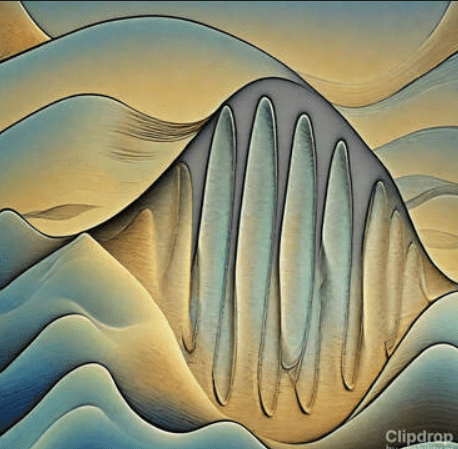Planck’s constant, denoted as ‘h’, is a central physical constant in the theory of quantum mechanics. This fundamental concept was introduced by Max Planck in 1900, marking a key turning point in the field of physics. At the time, Planck was investigating a problem known as the “ultraviolet catastrophe” related to black body radiation. To solve this issue, he proposed that electromagnetic energy was not emitted continuously as per classical physics, but instead in discrete ‘packets’ or ‘quanta’. Thus, the concept of quantum mechanics was born.
In the quantum model, the energy of these quanta is directly proportional to the frequency of the radiation, with Planck’s constant serving as the proportionality constant. This relationship is captured by the formula E = hν, where E is energy, h is Planck’s constant, and ν is frequency. In quantum mechanics, particles such as electrons and photons are described by wavefunctions or ‘wave packets’. These wave packets represent the state of a particle in terms of position and momentum and indicate the probability of finding the particle in a certain state. This view is fundamental to the concept of wave-particle duality in quantum mechanics.
The unit of Planck’s constant is joule-seconds (J⋅s) but it can also be understood as joules per hertz (J/Hz), essentially denoting the energy carried per cycle of the wave. This perspective is reflected in the concept of energy levels in quantum mechanics. The higher the frequency of the wave, the more energy each quantum carries. Below is a table illustrating the energy carried per quantum for different types of electromagnetic waves:
| Type of Wave | Frequency (Hz) | Energy per Quantum (J) | Energy per cycle (J/Hz) | |--------------|----------------|------------------------|-------------------------| | Radio Wave | 10^6 | 6.63 × 10^-28 | 6.63 × 10^-34 | | Microwave | 10^9 | 6.63 × 10^-25 | 6.63 × 10^-34 | | Infrared | 10^12 | 6.63 × 10^-22 | 6.63 × 10^-34 | | Visible Light| 10^14 | 6.63 × 10^-19 | 6.63 × 10^-34 | | Ultraviolet | 10^16 | 6.63 × 10^-16 | 6.63 × 10^-34 | | X-Rays | 10^18 | 6.63 × 10^-13 | 6.63 × 10^-34 | | Gamma Rays | 10^20 | 6.63 × 10^-10 | 6.63 × 10^-34 |
This table shows that as the frequency of the wave increases, so does the energy of each quantum, providing a clear illustration of the energy-frequency relationship in quantum mechanics.
In the previous sections, we discussed the concept of wave packets in the context of gamma rays and other types of electromagnetic radiation. We visualized gamma rays as a tightly packed zigzag pattern with extraordinarily high frequency, and described each cycle of a gamma ray wave – each crest-to-crest zigzag – as an energy packet. Now, let’s extend this concept to a broader picture that includes the idea of fields.
Imagine a field extending infinitely in all directions – this could represent, for example, an electromagnetic field in which photons (including gamma rays) exist. Normally, this field is calm and uniform. However, a photon represents a localized disturbance in this field, somewhat like a ripple created when you throw a pebble into a calm pond.
In the image, a wave packet is visualized as a concentrated bundle of waves in the middle. This wave packet is our ‘photon’ – it’s a peak of activity or ‘disturbance’ in the otherwise calm field. The waves within this packet are tightly packed together, mirroring our earlier visualization of the high-frequency gamma ray.
The height of the crest in this packet gives the probability of finding the photon at that location. So, the photon is most likely to be found where the waves are most intense – in the middle of the wave packet.
However, surrounding the wave packet, the waves become less dense and more spread out. This mirrors the potential for the photon to be found outside the main wave packet. It’s less likely, but not impossible, reflecting Heisenberg’s Uncertainty Principle, a key concept in quantum mechanics.
In conclusion, while we can’t pinpoint the exact location of the photon, we can say that it’s most likely to be found within the wave packet. This particle/wave duality is a fundamental concept in quantum mechanics and helps explain the behavior and characteristics of all quantum particles, including high-energy gamma rays.

